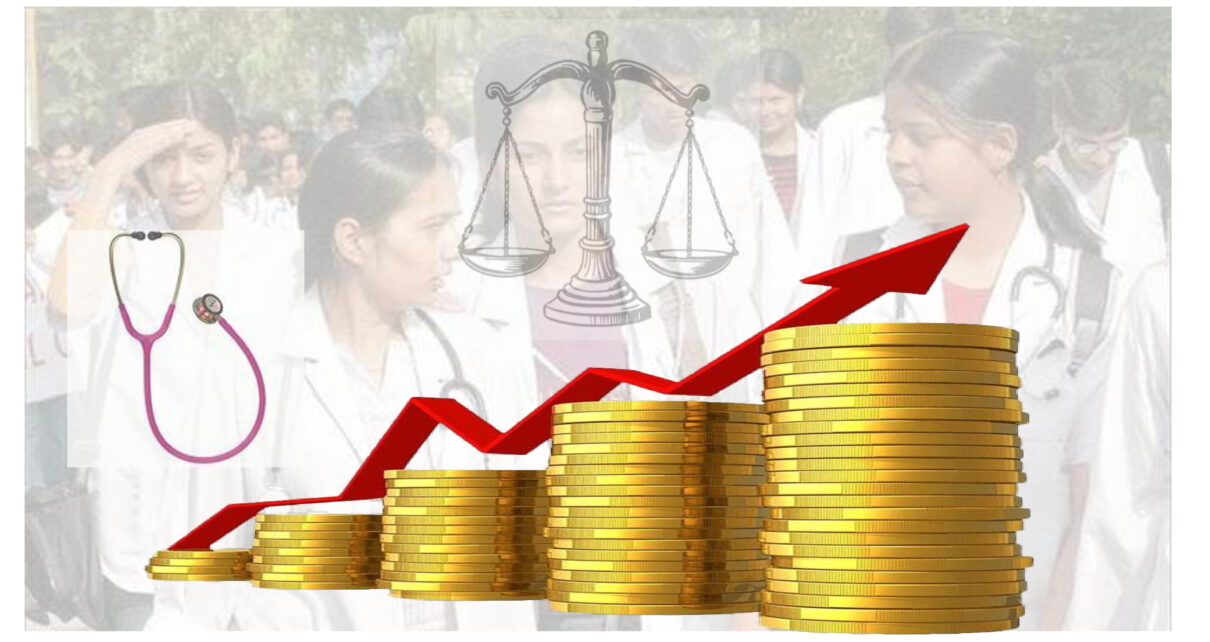Volume 13 Issues 9 September, 2023

Editor, MINDS Newsletter, Department of Psychiatry, All India Institute of Medical Sciences, (AIIMS) Raipur, Chhattisgarh, Indian
Follow me Twitter
Opening a medical college in India costs 700 crore to 1000 crore, depending on the city and the area. While government colleges offer subsidised undergraduate medical education at around Rs 5 lakh for MBBS, the lowest fee for the complete course in any private college is over Rs 70 lakh (1). Nevertheless, that makes medical education a costly affair, and this is not the case in one nation but the trend worldwide (2). This expense has led to a growing interest in ensuring that medical education costs deliver value for money to the payer. Value for money may be evaluated using several different analyses, including, but not limited to, cost-effectiveness, cost-benefit, and cost-utility studies (3).
Multiple interrelated factors help perpetuate this vicious cycle: substantial unmet healthcare needs or the large gap between the need for and the provision of healthcare treatment, a heterogeneously clustered distribution of healthcare infrastructure rooted in inequality (4).
In an era of expanding health sectors and rising costs, doctors are expected to have a working knowledge of health economics to better use resources, improve health care outcomes and quality, and understand micro- and macro-economic issues.
The microeconomics of medical education primarily focuses on cost-effectiveness, cost-benefit and utility-related analysis and negotiation between a student (as a buyer) and a medical college (as a seller). For example, students prefer a course that will likely get them on track to a high-earning speciality. However, most such decisions are based on asymmetric information and uncertainty. Often, the seller seems to have more information than the buyer, and a medical school might charge high tuition fees based more on its reputation than on the quality of its course.
In contrast, the macroeconomics of medical education deals with major economic procedures such as total economic activity, inflation, and unemployment at the country or global level. The association between health and economics in terms of gross domestic product (GDP) per capita is observed in Preston (5). Macroeconomics helps understand a country’s population, demography, health needs, and treatment gap, influencing health-related policies and budgets. From a macroeconomic perspective, a country should provide just the right numbers of medical graduates to serve the population so that there is neither a shortage of doctors on the one hand nor medical unemployment on the other.
Health systems support active and productive populations, reduce inequities and poverty, and promote social cohesion. A robust health system makes good economic sense and underpins the overall sustainable development agenda. While this notion is well-understood in theory, policy-makers require practical, country-level evidence demonstrating how investing in their health sectors and health systems helps achieve national economic objectives.
Balancing the economic aspects of medical education requires careful consideration of the costs, funding mechanisms, and long-term economic impacts on both individuals and society. Ensuring that medical education is accessible and sustainable is crucial for maintaining a well-functioning healthcare system and meeting the population’s health needs.
References :
- Jeevan Prakash Sharma. Borrowed Dreams: The Reality Of Medical Education In India Pushes Students To Fly Out. Outlook. 2022 Apr 5;
- Walsh K. The costs of clinical education. Med Teach. 2015 Jul 3;37(7):605–7.
- Walsh K, Levin H, Jaye P, Gazzard J. Cost analyses approaches in medical education: there are no simple solutions. Med Educ. 2013 Oct;47(10):962–8.
- Banerjee S. Determinants of rural-urban differential in healthcare utilization among the elderly population in India. BMC Public Health. 2021 Dec 17;21(1):939.
- Bloom DE, Malaney PN. Macroeconomic consequences of the Russian mortality crisis. World Dev. 1998 Nov;26(11):2073–85.

